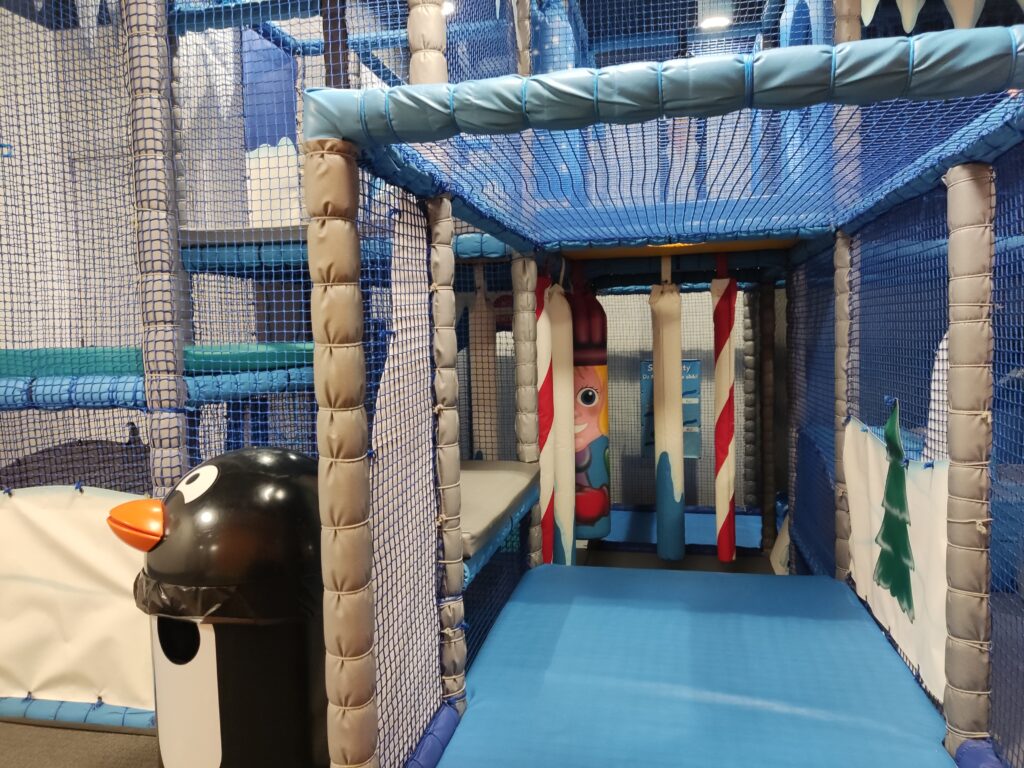There are all kinds of challenges facing parents in our position, even something as innocuous as taking an autistic child to soft play.
In the below article we explore why it may be challenging and what parents can do to make it a bit easier.
Autism and soft play
Keeping any child cooped up inside without burning energy can lead to boredom and restlessness.
So with that in mind, we as parents are always looking for somewhere to go. Soft play then seems like an instant option.
What with it’s safe padding and numerous ways for kids to entertain themselves.
Alas however, trips out to soft play with an autistic child can be stress inducing for various reasons.
Sensory overload
Soft play areas are often brightly lit, noisy, and crowded, which can be overwhelming for children with autism.
The constant bouncing, climbing, and crashing of equipment can create auditory and tactile overload, leading to anxiety, meltdowns, or even physical discomfort.

Social challenges
Navigating a busy soft play area can be challenging for any child.
For autistic kids however who may find social interaction difficult, it can be especially daunting.
The unstructured nature of play can make it hard to predict what might happen next, and the lack of clear rules or boundaries can be confusing.
This can lead to meltdowns or withdrawal from play altogether.
Limited forms of play
While soft play areas offer physical activity, they often lack opportunities for imaginative or solitary play.
These types of playing can be important for autistic children. The focus on climbing, sliding, and jumping might not appeal to all kids.
There may be limited options for quieter activities or individual play.
Overstimulation
On the other hand some autistic children may love soft play so much that they can become over stimulated.
Transitioning your child from soft play to go home may be a challenge, or getting them to share apparatus.
What can parents do to help their autistic children at soft play?
Here are some ways in which you may be able to make these trips out run more smoothly.
Pick your time
Try to choose a quieter time of day to avoid crowds. A number of soft plays have SEN focused sessions as well where various accomodations are made.
Venues reduce music, dim the lights and have fewer children present. All of these tactics can make it more comfortable for your child or children.
Prepare in advance
One thing which may be of use is to prepare your child in advance. This could involve showing them pictures or videos of the venue.
Ideally you can show them images of them playing there on a previous occasion. This gives them some reassurance that soft play is a fun activity.
Bring distractions
Most parents of autistic children have some methods for calming their kids. These could include some of their favourite toys or treats.
Having something in your arsenal to help distract or calm your child if they are getting overwhelmed can be invaluable.
Sensory aids such as ear defenders can also really help children with sensitivities at soft play.
Create structure
Something which can assist with journeys to soft play is to create a schedule or timetable.
This could be as simple as having a set time when you are going to leave, or you could have set lengths of time in different areas.
Whatever you choose it can be really helpful to provide an autistic child that comforting structure.
Choose the right venue
Not all soft plays are equal. Consider hunting around for one which you think will suit your child the most.
It may be something like an abundance of trampolines or swings which they enjoy.
Or it may be something like a designated quiet space. Whatever it may be, a bit of research online in advance may pay dividends in the long run.
Summary – Taking an autistic child to soft play
It’s important to remember that every child is an individual, and what works for one autistic child might not work for another.
Some kids may thrive in soft play areas, while others may find them overwhelming.
Overall, soft play areas can be a fun and stimulating environment for many children, but it’s important to consider the potential challenges for autistic kids before heading out.
Any tips or ideas?
We would love to hear from you if you have got any techniques or ideas for our readers to try.
Be sure to leave a comment if any of the above has helped or if you have any ideas we can add to this article.
Also be sure to search for any other articles you might find helpful.
Try for example searching below for topics like ‘meltdown’ or ‘communication’.

